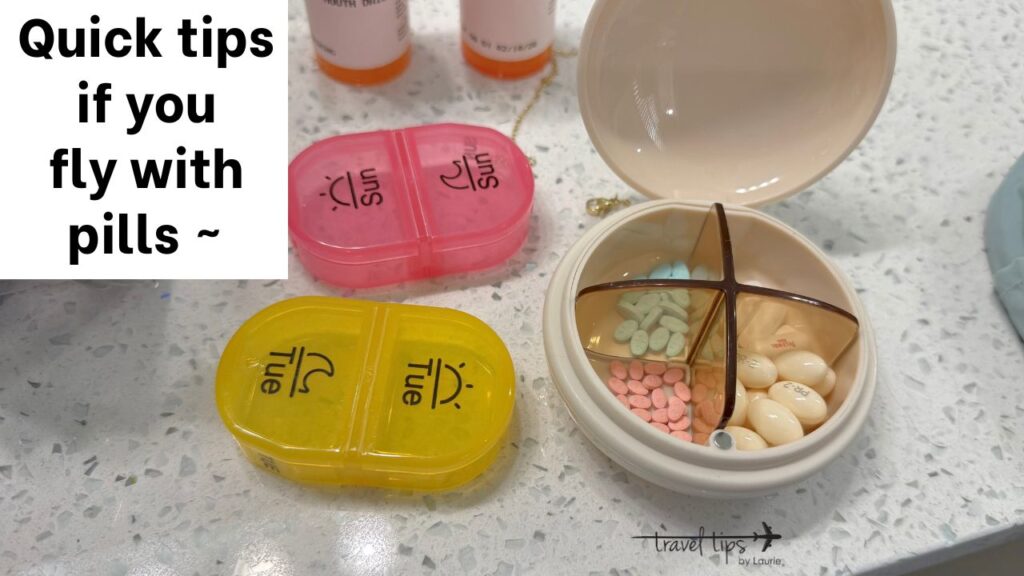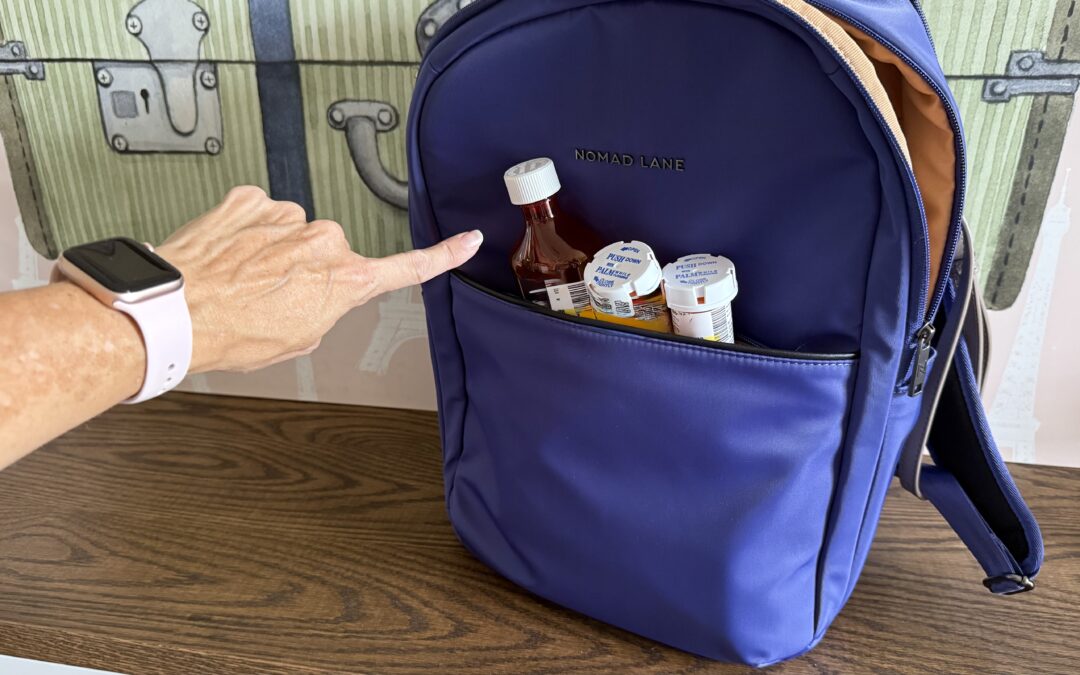The Transportation Security Administration (TSA) has had to crack down on traveling with medication, probably because it’s so confusing!
They have made some clarifications and are strongly emphasizing rules in print regarding traveling with medicine, in 2025.
Here are the main rules for flying with medicine.
Remember that this is for US vs International but also pill versus liquid as well as prescription versus over the counter, but medically necessary.
These rules can be vague, but I’ve got you.
General Guidelines for Medications
- Pill or Solid Forms: Medications in pill or other solid forms must undergo security screening. They can be carried in both carry-on and checked baggage, but it’s highly recommended to keep essential medications in your carry-on for immediate access in case of lost or delayed luggage.
- Liquid Medications (Exempt from 3-1-1 Rule): Medically necessary liquids, gels, and aerosols (including prescription medications, over-the-counter medications like saline solution or liquid nutrition, and infant/child nourishment like breast milk or baby formula) are allowed in quantities larger than 3.4 ounces (100 ml) in your carry-on bag. They do NOT need to be in a liquids bag with your other liquids.
- Do this with liquid medications:
- You must declare these items to TSA officers at the checkpoint for inspection.
- Separate Screening: Remove them from your carry-on bag and place them in a separate bin for X-ray screening. Remember that this is liquid. They do not need to see pills.
- Additional Screening: If a medically necessary liquid, gel, or aerosol alarms during screening, additional testing may be required. If the alarm cannot be resolved, the item may not be allowed.
- I had my liquid cholesterol medicine in a travel cooler in Houston. I declared it. They said to just keep it in my carryon bag. But in Hawaii, I did not have the medicine anymore, and the cooler ice pack was not even cold. I declared or told the officer I had it and they did screen it.
- Original Containers (Recommended, Not Always Required by TSA): While the TSA recommends that medication be clearly labeled to facilitate the screening process and to avoid potential questions, it is not a strict TSA requirement to keep all medications in their original prescription bottles for domestic travel.
- This is why: for controlled substances some states have individual laws regarding prescription medication labels that passengers need to comply with.
International Rules for Bringing Medicine in Baggage
Now let’s talk about international travel rules for medication. Remember, these are the general rules. I will break them down later.
- It is often a requirement to keep medications in their original labeled containers with a prescription or doctor’s note. But just like America, other countries understand that we take alot of medicine and they understand you cannot put all of your bottles in one bag.
- Accessories: Ice packs, freezer packs, gel packs, and other accessories used to keep medically necessary items cool are permitted and must also undergo screening.
Key Updates and “New” Clarifications for 2025
- Modified 3-1-1 Rule Application: While medically necessary liquids are exempt, hand sanitizer does NOT count as medical. The TSA is strictly stating two things for passengers in 2025:
- Hand sanitizer must follow the 3.4-ounce rule and must fit inside your single quart-size liquids bag. As a reminder, travelers are limited to one quart-sized liquids bag per passenger – not talking about medicine.
Now let’s break down international travel with medications.
It is crucial to research the specific medication laws of your destination country before you travel. Some common medications allowed in the U.S. might be illegal or require special import permissions in other countries. Examples are Adderall and certain cold medications with pseudoephedrine. In Tokyo, Japan, an inhaler that has stimulants like pseudoephedrine is illegal.
This is a Good Travel Tip:
Always pack at least 3 to 5 extra days’ worth of essential medications. Bring a printed list of your prescriptions, including the generic name, dosage, your doctor’s contact, and your pharmacy information. Save a copy on your phone or in a health app as well.
I have free instructions on how to save and lock your notes, and one for iPhone users, where you can take pictures of your labels and keep those in the Notes page on your phone.

Medical Devices
If you are traveling with an insulin pump, glucose monitor, or other medical device attached to your body, inform the TSA officer before screening. You are not required to remove medical devices attached to your body.
I highly recommend watching this video where I interview TSA officers about the free program TSA Cares for people who have visible or invisible issues, be it a broken leg, an extremely slow moving adult, autism, ptsd. You do not have to even tell them what you or your family member has; but you have to sign up for it 5 days in advance.
I will also list the TSA Cares site if reading about it is faster for you.
For the most up-to-date and detailed information, go to the TSA.gov website.
Here are 2 easy travel tips for you:
- For large quantities, ask your doctor to prescribe you that amount in a small, flat plasty or foil sheet like Sudafed used to come in. Or ask your pharmacist for it.
- This is a new travel essential from Amazon for month long pill organizers that pack flat instead of the bulky pill containers. Your prescription label photo, sticker or email would be in your possession. But in the US it has gotten so much better.
